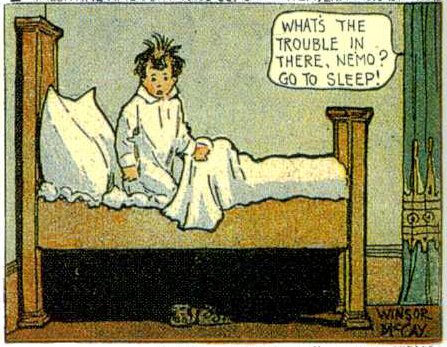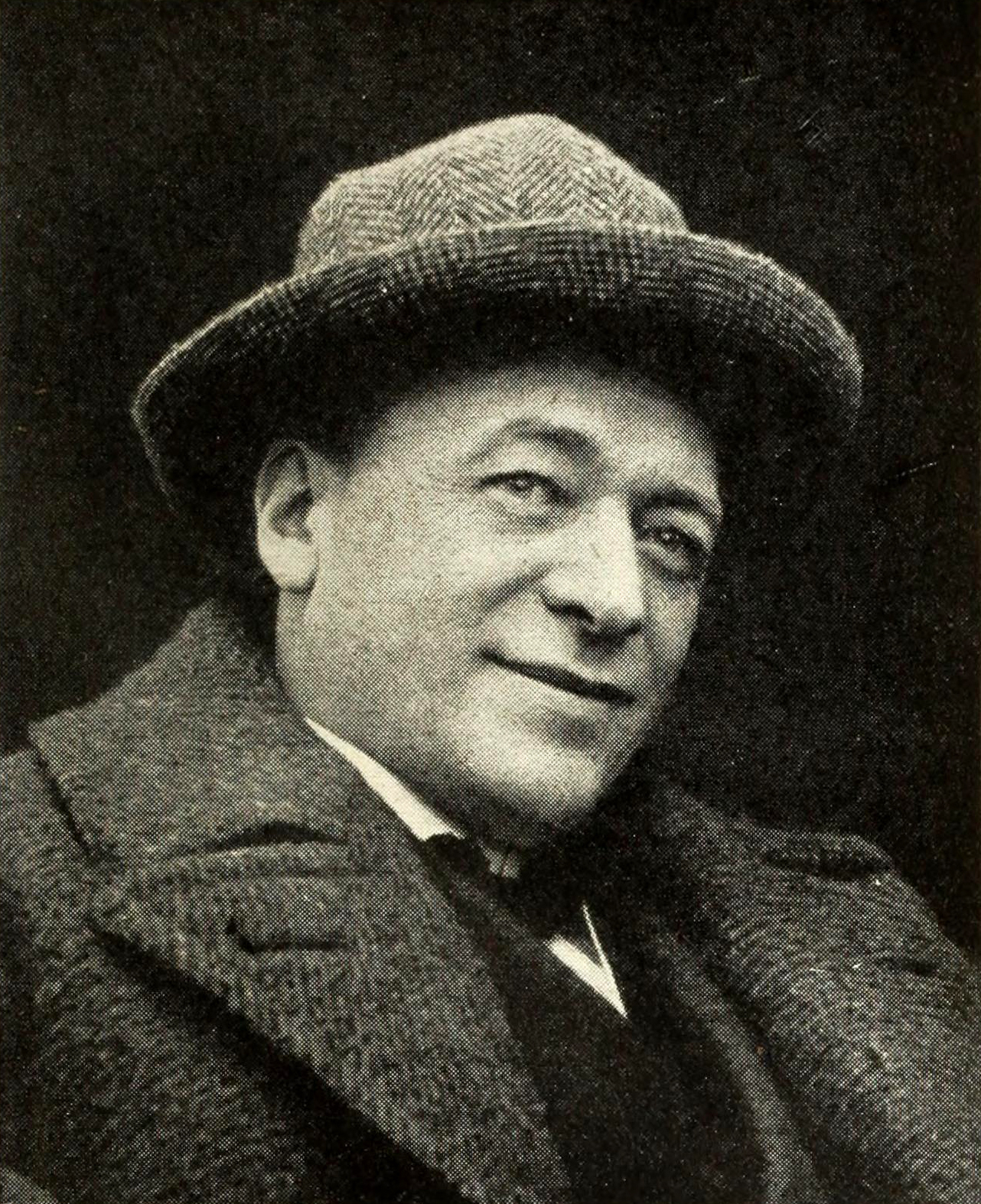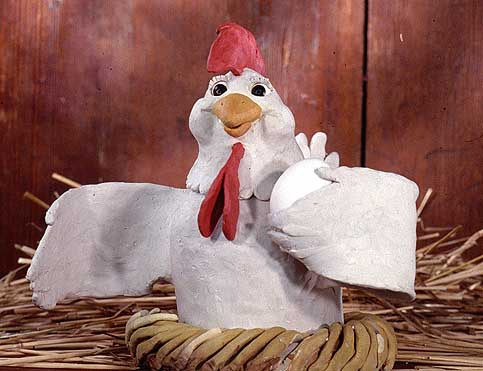|
Little Nemo (1911 Film)
''Winsor McCay: The Famous Cartoonist of the N.Y. Herald and His Moving Comics'', more commonly known as ''Little Nemo'', is a 1911 silent film, silent animation, animated short film by American cartoonist Winsor McCay. One of the earliest animated films, it was McCay's first, and featured characters from McCay's comic strip ''Little Nemo in Slumberland''. Its expressive character animation distinguished the film from the experiments of History of animation, earlier animators. Inspired by flip books his son brought home, McCay came to see the potential of the animated film medium. He claimed to be the first to make such films, though James Stuart Blackton and Émile Cohl were among those who preceded him. The short's four thousand drawings on rice paper were shot at Vitagraph Studios under Blackton's supervision. Most of the film's running time is made up of a live-action sequence in which McCay bets his colleagues that he can make drawings that move. He wins the bet with four ... [...More Info...] [...Related Items...] OR: [Wikipedia] [Google] [Baidu] |
Little Nemo
Little Nemo is a fictional character created by American cartoonist Winsor McCay. He originated in an early comic strip by McCay, ''Dream of the Rarebit Fiend'', before receiving his own spin-off series, ''Little Nemo in Slumberland''. The full-page weekly strip depicted Nemo having fantastic dreams that were interrupted by his awakening in the final panel. The strip is considered McCay's masterpiece for its experiments with the form of the comics page, its use of color and perspective, its timing and pacing, the size and shape of its panels, and its architectural and other details. ''Little Nemo in Slumberland'' ran in the ''New York Herald'' from October 15, 1905, until July 23, 1911. The strip was renamed ''In the Land of Wonderful Dreams'' when McCay brought it to William Randolph Hearst's ''New York American'', where it ran from September 3, 1911, until July 26, 1914. When McCay returned to the ''Herald'' in 1924, he revived the strip, and it ran under its original titl ... [...More Info...] [...Related Items...] OR: [Wikipedia] [Google] [Baidu] |
How A Mosquito Operates
''How a Mosquito Operates'' is a 1912 silent animated film by American cartoonist Winsor McCay. The six-minute short depicts a giant mosquito tormenting a sleeping man. The film is one of the earliest works of animation, and its technical quality is considered far ahead of its time. It is also known under the titles ''The Story of a Mosquito'' and ''Winsor McCay and his Jersey Skeeters''. McCay had a reputation for his proficient drawing skills, best remembered in the elaborate cartooning of the children's comic strip ''Little Nemo in Slumberland'' he began in 1905. He delved into the emerging art of animation with the film ''Little Nemo'' (1911), and followed its success by adapting an episode of his comic strip ''Dream of the Rarebit Fiend'' into ''How a Mosquito Operates''. McCay gave the film a more coherent story and more developed characterization than in the ''Nemo'' film, with naturalistic timing, motion, and weight in the animation. ''How a Mosquito Operates'' h ... [...More Info...] [...Related Items...] OR: [Wikipedia] [Google] [Baidu] |
Sunday Comics
The Sunday comics or Sunday strip is the comic strip section carried in most western newspapers, almost always in color. Many newspaper readers called this section the Sunday funnies, the funny papers or simply the funnies. The first US newspaper comic strips appeared in the late 19th century, closely allied with the invention of the color press. Jimmy Swinnerton's ''The Little Bears'' introduced sequential art and recurring characters in William Randolph Hearst's '' San Francisco Examiner''. In the United States, the popularity of color comic strips sprang from the newspaper war between Hearst and Joseph Pulitzer. Some newspapers, such as '' Grit'', published Sunday strips in black-and-white, and some (mostly in Canada) print their Sunday strips on Saturday. Subject matter and genres have ranged from adventure, detective and humor strips to dramatic strips with soap opera situations, such as ''Mary Worth''. A continuity strip employs a narrative in an ongoing storyline. Other s ... [...More Info...] [...Related Items...] OR: [Wikipedia] [Google] [Baidu] |
John Canemaker
John Cannizzaro Jr. (born 1943), better known as John Canemaker, is an American independent animator, animation historian, author, teacher and lecturer. In 1980, he began teaching and developing the animation program at New York University, Tisch School of the Arts', Kanbar Institute of Film and Television Department. Since 1988 he has directed the program and is currently a tenured full professor. From 2001-2002 he was Acting Chair of the NYU Undergraduate Film and Television Department. In 2006, his film '' The Moon and the Son: An Imagined Conversation'', a 28-minute animated piece about Canemaker's relationship with his father, won the Academy Award for best animated short. In 2007 the same piece picked up an Emmy award for its graphic and artistic design. Biography Raised in Elmira, New York, Canemaker began an acting career which included off-Broadway and advertising work in New York City from 1961 to 1965. In 1967, after a two-year stint in the Army, Canemaker, with funds f ... [...More Info...] [...Related Items...] OR: [Wikipedia] [Google] [Baidu] |
Fantasmagorie (1908 Film)
''Fantasmagorie'' is a 1908 French animated film by Émile Cohl. It is one of the earliest examples of traditional (hand-drawn) animation, and considered by film historians to be the first animated cartoon. Description The film largely consists of a stick man moving about and encountering all manner of morphing objects, such as a wine bottle that transforms into a flower which becomes an elephant. There are also sections of live action where the animator's hands enter the scene. The main character is drawn by the artist's hand on camera, and the main characters are a clown and a gentleman. Other characters include a woman in a film theater wearing a large hat with gigantic feathers and a strongman. The film, in all of its wild transformations, is a direct tribute to the by-then forgotten Incoherent movement. The title is taken from the original French word for "phantasmagoria", a mid-19th century magic lantern show with moving images of ghosts. History Cohl worked on ' ... [...More Info...] [...Related Items...] OR: [Wikipedia] [Google] [Baidu] |
Stop Motion
Stop motion is an animated filmmaking technique in which objects are physically manipulated in small increments between individually photographed frames so that they will appear to exhibit independent motion or change when the series of frames is played back. Any kind of object can thus be animated, but puppets with movable joints (puppet animation) or plasticine figures (''clay animation'' or claymation) are most commonly used. Puppets, models or clay figures built around an armature are used in model animation. Stop motion with live actors is often referred to as pixilation. Stop motion of flat materials such as paper, fabrics or photographs is usually called cutout animation. Terminology The term "stop motion", relating to the animation technique, is often spelled with a hyphen as "stop-motion". Both orthographical variants, with and without the hyphen, are correct, but the hyphenated one has a second meaning that is unrelated to animation or cinema: "a device for automatical ... [...More Info...] [...Related Items...] OR: [Wikipedia] [Google] [Baidu] |
Trick Film
In the early history of cinema, trick films were short silent films designed to feature innovative special effects. History The trick film genre was developed by Georges Méliès in some of his first cinematic experiments, and his works remain the most classic examples of the genre. Other early experimenters included the French showmen Émile and Vincent Isola, the British magicians David Devant and John Nevil Maskelyne, and the American cinematographers Billy Bitzer and James Stuart Blackton. In the first years of film, especially between 1898 and 1908, the trick film was one of the world's most popular film genres. Before 1906, it was likely the second most prevalent genre in film, surpassed only by nonfiction actuality films. Techniques explored in these trick films included slow motion and fast motion created by varying the camera cranking speed; the editing device called the substitution splice; and various in-camera effects, such as multiple exposure. "Trick novelties, ... [...More Info...] [...Related Items...] OR: [Wikipedia] [Google] [Baidu] |
The Enchanted Drawing
''The Enchanted Drawing'' is a 1900 silent film directed by J. Stuart Blackton. It is best known for containing the first animated sequences recorded on standard picture film, which has led Blackton to be considered the father of American animation. Contents The film shows a man drawing a cartoon face on an easel. He draws a bottle of wine and a glass, then takes them off the paper and has a drink. He then gives the cartoon face a drink of wine, and the face breaks into a broad smile. He then draws a hat on the face's head, removes it, and puts it on. Next a cigar appears in the face's mouth, and the man removes it to the face's unhappiness. He then places all of the objects back into the image, and the face's eyes and grin grow wider in appreciation. Technique It is a combination of a silent film and stop motion animation. See also * List of American films of 1900 References External links * * ''The Enchanted Drawing''at the Library of Congress The Library o ... [...More Info...] [...Related Items...] OR: [Wikipedia] [Google] [Baidu] |
Bob McCay
Robert Winsor McCay (21 June 1896 – 21 April 1962) was an American cartoonist during the golden age of comic books. He worked professionally under the names R. Winsor McCay, Winsor McCay Jr., and Bob McCay. He was the son of cartoonist and animator Winsor McCay. Early life Robert McCay was born to Winsor and Maude McCay on 21 June 1896. A sister, Marion, was born the following year. In 1903 Winsor moved the family from Cincinnati to New York City in order to work for the New York Herald. Bob was enrolled in Erasmus High School but failed to graduate when he ran away at the age of 17. page #? At age 19, McCay was enrolled as an art student at the Pratt Institute when he and friend William “Thorp” Adams enlisted with the New York National Guard, 1st New York Cavalry. They were stationed in Texas as part of the border patrol during the Pancho Villa Expedition. Following the withdrawal in 1917, both men were discharged and returned home, and Bob became engaged to Theresa � ... [...More Info...] [...Related Items...] OR: [Wikipedia] [Google] [Baidu] |
Dream Of The Rarebit Fiend
''Dream of the Rarebit Fiend'' is a newspaper comic strip by American cartoonist Winsor McCay, begun September 10, 1904. It was McCay's second successful strip, after ''Little Sammy Sneeze'' secured him a position on the cartoon staff of the ''New York Herald''. ''Rarebit Fiend'' appeared in the ''New York World-Telegram, Evening Telegram'', a newspaper published by the ''Herald''. For contractual reasons, McCay signed the strip with the pen name "Silas". The strip had no continuity (fiction), continuity or recurring characters, but a recurring theme: a character has a nightmare or other bizarre dream, usually after eating a Welsh rarebit—a cheese-on-toast dish. The character awakens in the closing panel and regrets having eaten the rarebit. The dreams often reveal unflattering sides of the dreamers' psyche (psychology), psyches—their phobias, Hypocrisy, hypocrisies, discomforts, and dark fantasies. This was in great contrast to the colorful fantasy dreams in McCay's si ... [...More Info...] [...Related Items...] OR: [Wikipedia] [Google] [Baidu] |
Humorous Phases Of Funny Faces
''Humorous Phases of Funny Faces'' is a 1906 short silent animated cartoon directed by James Stuart Blackton and generally regarded by film historians as the first animated film recorded on standard picture film.Magill's Survey of Silent Films, Vol2. FLE-POT p.562 edited by Frank N. Magill c.1982 (3 book set ) Retrieved June 27, 2018 Content In the cartoon, animated hand-drawn scenes appear on a chalkboard, including a clown playing with a hat and a dog jumping through a hoop. In the beginning, though, the cartoonist's hands are included, too, as he draws the first several lines on the chalkboard in standard live action. From there, the stop-motion technique is used to show what appears to be drawings completing—and then moving—by themselves with no artist on screen. Techniques Stop-motion as well as cutout animation are used, just as Edwin Porter moved his letters in ''How Jones Lost His Roll'', and ''The Whole Dam Family and the Dam Dog''. However, there is a very sh ... [...More Info...] [...Related Items...] OR: [Wikipedia] [Google] [Baidu] |







